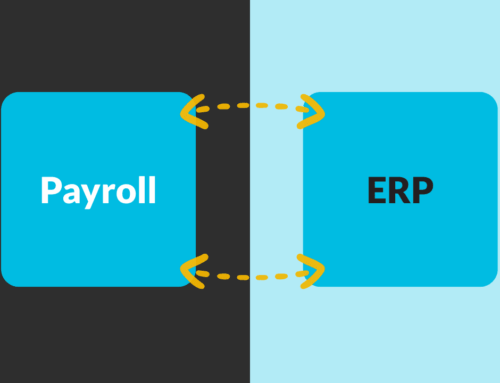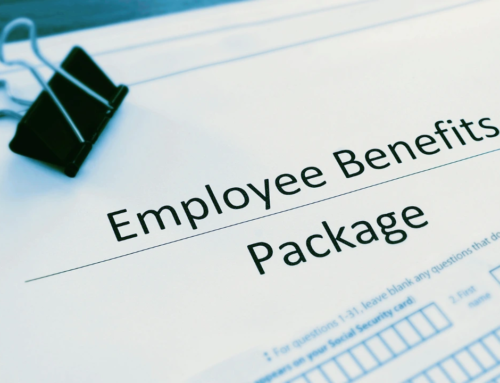The following is a guest post collaboration with Inova Partner, Hotel Investor Apps (HIA).
More companies are turning to labor intelligence in response to rising labor costs and unprecedented labor shortages. Higher labor expenses can affect profit margins and profitability, and if there are not enough staff to meet business demands, it can also affect service levels and guest satisfaction.
For workforce optimization, the key is making sure that there is just the right amount of labor to keep customer satisfaction high and meet demand without overstaffing. Controlling labor costs and shaving a few percent off labor expenditures also directly contributes to the bottom line and helps increase asset value. To help achieve this, more and more businesses are turning to labor reporting combined with business intelligence.
What is Labor Intelligence?
Labor Intelligence is business intelligence applied to labor management. It consists of reporting and analysis of labor data layered with operational data so that managers can spot trends, get alerts on anomalies, and bring actionable insights into the picture.
As the business intelligence software pulls in data from the payroll provider, it can be parsed and layered with operational and performance data to provide further insights and enable operators to make more informed decisions about how best to utilize their workforce.
Why the Right Integration Makes All the Difference
Getting accurate data on a frequent basis – daily is best – is key to staying on top of labor trends. And that depends upon the quality of the software integration between the business intelligence provider and the payroll provider. If the integration is poor or outdated, it can slow down data transfers and lead to inaccuracies. Older integrations can also have potential points of failure like intermediate servers used for file hosting, email services, and scheduled emails used to deliver the data.
A good labor intelligence integration has a direct two-way API that enables the business intelligence provider to retrieve data frequently. When managers have access to daily labor intelligence reporting, it enables them to keep their fingers on the pulse of the business and limits surprises at the end of each payroll cycle.
Labor Intelligence in Hospitality
As a labor-intensive service industry, hospitality is one of the top areas that can benefit from labor intelligence. Additionally, it is widely agreed that almost every hotel has an opportunity for some savings in labor! This then translates into an opportunity to directly affect profitability in an industry already battling many economic pressures, such as higher interest rates, inflation, and, as discussed – skyrocketing labor costs.
In hospitality, blending labor data with operations and performance data enables hoteliers to monitor key performance indicators and track performance compared to budget.
Some of the most important labor intelligence metrics for hotels include:
- Minutes Per Occupied Room (MPOR): This measures the time it takes for housekeeping staff to clean a room. By making sure this statistic stays in line with that budgeted for the property ensures that housekeeping labor costs are kept on track.
- Cost Per Occupied Room (CPOR): This statistic divides the overall property wages per occupied room so managers and operators know how much they are spending per occupied room.
- Overtime tracking: This is key to monitoring costly overtime and identifying any anomalies or trends, such as unusually high overtime in a specific property.
- Hours/Wages data: This data can be sliced and diced in many ways to drill down into the details. This can include by portfolio, brand, region, property, day of week, and down to the department, position, and employee level detail. This way labor can be accurately tracked compared to budget.
Again, the up-to-date reporting and analysis makes all the difference in helping to stay on top of labor. Managers don’t have to wait until the end of the month or pay period to see actuals and trends when the data is delivered daily in dashboards and reports.
Labor Intelligence in Other Industries
Labor intelligence, empowered by sophisticated business intelligence tools, extends its benefits beyond hospitality into a wide array of industries. Here’s how various sectors can leverage these tools to enhance operational efficiency and workforce management:
Manufacturing
In manufacturing, where optimizing labor efficiency directly impacts production costs and output, labor intelligence plays a crucial role. By integrating payroll data with business intelligence, manufacturers can:
- Efficiency Metrics: Track metrics like labor cost per unit produced or labor cost per machine hour to optimize resource allocation.
- Production Forecasting: Use predictive analytics to forecast labor needs based on production schedules and demand fluctuations.
- Quality Control: Analyze labor data alongside quality metrics to identify correlations between workforce performance and product quality.
Retail
Labor management is critical in retail, where staffing levels directly influence customer service and operational costs. Retailers can benefit from labor intelligence by:
- Customer Demand Analysis: Forecast staffing needs based on historical sales data, promotional periods, and foot traffic patterns.
- Employee Productivity: Measure productivity metrics such as sales per hour or transaction times to optimize staffing during peak hours.
- Compliance Monitoring: Ensure adherence to labor laws and regulations through automated tracking of work hours and breaks.
Healthcare
In healthcare, where patient care depends on staff availability and efficiency, labor intelligence helps in:
- Patient-to-Staff Ratios: Optimize staffing levels based on patient volumes and acuity levels to ensure quality care without excessive costs.
- Staffing Forecasting: Predict staffing needs by analyzing patient admission rates, surgery schedules, and historical data on patient care requirements.
- Skill Mix Optimization: Analyze workforce data to ensure the right mix of skills among nursing staff, doctors, and support personnel.
Technology and IT Services
Labor intelligence is invaluable in technology-driven industries where talent management and operational efficiency are paramount. Key applications include:
- Project Resource Allocation: Allocate resources based on project timelines, skill requirements, and budget constraints.
- Utilization Rates: Monitor employee utilization rates and adjust staffing to meet project demands efficiently.
- Training Needs Analysis: Identify skill gaps and training needs by analyzing performance data and employee feedback.
In banking and finance, where client satisfaction hinges on efficient service delivery and compliance, labor intelligence supports:
- Transaction Monitoring: Analyze transaction volumes and peak times to optimize teller and customer service staff scheduling.
- Regulatory Compliance: Ensure compliance with labor laws and financial regulations through accurate tracking and reporting of work hours.
- Fraud Detection: Use anomaly detection and pattern recognition to identify potential fraud through employee behavior analysis.
Education
Labor intelligence in education helps institutions manage faculty and staff resources effectively:
- Classroom Management: Optimize teaching schedules and classroom assignments based on student enrollment and course demands.
- Staff Development: Identify professional development needs and track faculty workload to prevent burnout and maintain teaching quality.
- Budget Allocation: Analyze staffing costs against educational outcomes to justify budget allocations and optimize resource utilization.
Boosting Labor Optimization with Payroll Data
By leveraging payroll data and advanced analytics alongside labor intelligence, businesses in a wide variety of industries can effectively navigate labor challenges while maintaining service levels and profitability in an increasingly competitive environment.
Payroll data provides a treasure trove of information for better decision-making in all industries. With this data, combined with labor intelligence, companies can make informed decisions using:
- Predictive Analytics: Use historical data to predict future trends such as employee turnover, skill requirements, and workforce productivity.
- Sentiment Analysis: Analyze employee communications and feedback to gauge morale and detect potential issues before they escalate.
- Employee Lifecycle Analysis: Assess data from hiring, onboarding, performance reviews, and exit interviews to improve retention and engagement strategies.
- Diversity Metrics: Measure and analyze diversity across various demographics within the workforce.
- Engagement Surveys: Conduct regular surveys to measure employee engagement and identify areas for improvement.
- Attrition Analysis: Study the reasons for employee turnover and implement strategies to reduce attrition.
- Productivity Tracking: Leverage tools that track productivity and collaboration in remote and hybrid work environments.
- Flexibility and Well-being Metrics: Monitor how flexible work arrangements impact employee well-being and performance.
Technology-Driven Solutions for Labor Optimization
In summary, the current environment of rising labor costs and challenges with labor scarcity is a serious issue affecting many industries. Labor intelligence can help to track and control labor costs without sacrificing guest/customer satisfaction or performance standards.
A tight integration with the payroll provider delivers the best data. When implemented, it can help operators monitor and track performance compared to budget on both a property and portfolio level. Staying on budget or shaving a few percent off labor costs directly impacts the profitability of businesses, driving better results for owners/stakeholders and helping to combat the economic pressures faced by many businesses today.
About Hotel Investor Apps
Hotel Investor Apps (HIA) is the only full ERP designed specifically for the hotel industry. The advanced, all-in-one back-office platform offers enterprise-level accounting and business intelligence tools to consolidate data, automate and streamline processes, and deliver real-time analysis for more profitable hotel management.
HIA and Inova Payroll’s Partnership
The recently announced partnership between Hotel Investor Apps (HIA) and Inova Payroll offers a best-in-class 2-way API integration to deliver up-to-date business intelligence labor analysis for hotels. More on the partnership here. Or to see HIA’s Labor Intelligence platform in action, Request a Demo today.




